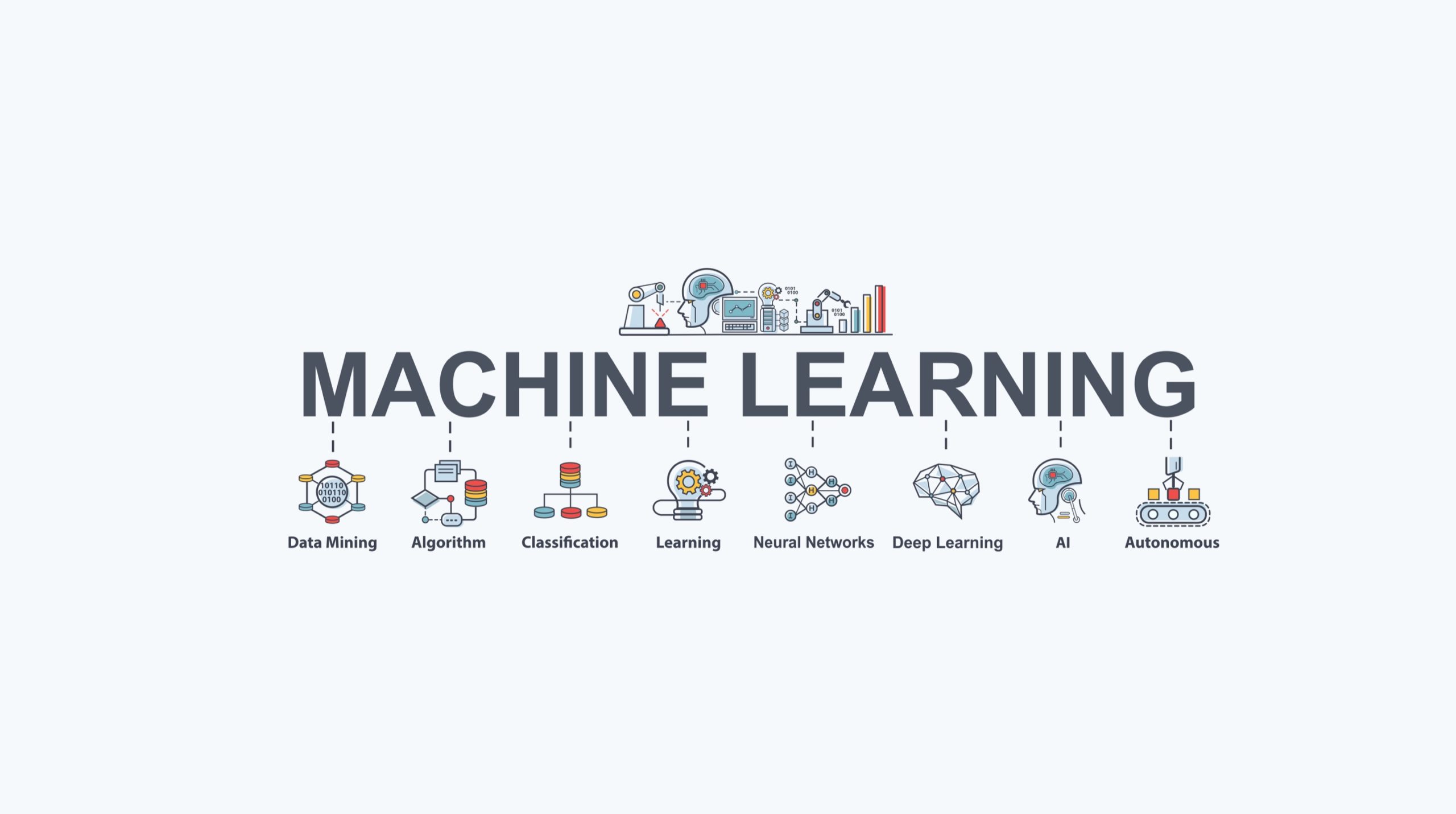Introduction
The world of machine learning is vast and exciting, with various algorithms and techniques available to analyze and understand complex data. One such algorithm that has gained significant popularity in recent years is the Multi-Layer Perceptron (MLP). MLP is a type of artificial neural network that is widely used in various fields, including image recognition, natural language processing, and forecasting.
MLP is a supervised learning algorithm that can be used for both regression and classification tasks. It is based on the concept of simulating the functioning of a biological neuron. By mimicking the way neurons in our brain communicate and process information, MLP can effectively learn patterns and make accurate predictions.
The main advantage of using MLP is its ability to learn complex relationships between input and output variables. Unlike simpler linear models, MLP can capture non-linear patterns and make highly accurate predictions based on the provided input data. This makes it a powerful tool for solving problems that require sophisticated pattern recognition and decision-making.
MLP consists of multiple layers of interconnected nodes, also known as neurons. These layers are organized in a hierarchical manner, with an input layer, one or more hidden layers, and an output layer. Each neuron in the network receives inputs, performs calculations using an activation function, and passes the results to the next layer.
In this article, we will explore the different aspects of MLP, including its definition, structure, activation functions, and training process. We will also discuss the advantages and disadvantages of using MLP in machine learning applications. By the end of this article, you will have a clear understanding of what MLP is and how it can be utilized to solve real-world problems.
Definition of MLP
The Multi-Layer Perceptron (MLP) is a type of artificial neural network that is widely used in machine learning. It is a feedforward neural network model that consists of multiple layers of interconnected nodes, also known as neurons. MLP is designed to simulate the functioning of a biological neuron, allowing it to learn and make predictions based on input data.
The main idea behind MLP is to create a network of interconnected neurons that work together to process and analyze information. Each neuron in the network receives inputs, performs calculations using an activation function, and passes the results to the next layer. This process, known as forward propagation, occurs until the output layer is reached, where the final predictions are made.
MLP is often used for solving both regression and classification tasks. In regression tasks, MLP can predict continuous values, such as predicting the price of a house based on certain features. In classification tasks, MLP can assign input data to different classes, such as determining whether an email is spam or not based on its content.
The strength of MLP lies in its ability to capture and learn complex relationships between input and output variables. Unlike simpler linear models, MLP can handle non-linear patterns and make accurate predictions. This is achieved by introducing hidden layers in the network, which allow for more complex calculations and higher-level feature extraction.
MLP utilizes a training process called backpropagation to update the weights of the connections between neurons. During training, the network is exposed to a set of labeled examples, and the weights are adjusted to minimize the difference between the predicted output and the true output. This iterative process continues until the network reaches a satisfactory level of accuracy.
In summary, MLP is a powerful machine learning algorithm that utilizes a multi-layered structure of interconnected neurons to process and analyze data. Its ability to capture complex relationships makes it a valuable tool for solving a wide range of tasks across various domains.
Structure of MLP
The Multi-Layer Perceptron (MLP) is composed of multiple layers of interconnected nodes, also known as neurons. The structure of an MLP can be divided into three main parts: the input layer, the hidden layers, and the output layer. Each layer plays a crucial role in the overall functioning of the network.
The input layer is the first layer of the MLP, and it receives the initial input data. Each neuron in the input layer is responsible for representing a specific feature or attribute of the input data. For instance, in an image recognition task, each neuron in the input layer may represent a specific pixel value of the image.
The hidden layers are the intermediate layers between the input and output layers. They are responsible for transforming the input data through a series of linear and non-linear calculations. The number of hidden layers and the number of neurons in each hidden layer can vary depending on the complexity of the problem and the available resources. The hidden layers allow the MLP to capture and understand complex relationships between the input and output variables.
The output layer is the final layer of the MLP, and it produces the predicted output based on the calculations performed in the previous layers. The number of neurons in the output layer corresponds to the number of possible output classes or the number of output variables in a regression task. For instance, in a binary classification task, the output layer may have two neurons representing the two possible classes.
Each neuron in the MLP is connected to neurons in the previous and next layers through weighted connections. These weights determine the influence of each input on the neuron’s output. During the forward propagation phase, the inputs to each neuron are multiplied by their corresponding weights, and the results are passed through an activation function.
The activation function in an MLP introduces non-linearity into the network, allowing the model to learn and represent complex patterns. Popular activation functions used in MLP include the sigmoid function, the rectified linear unit (ReLU), and the hyperbolic tangent (tanh) function. The choice of activation function depends on the specific problem and the desired behavior of the network.
In summary, the structure of an MLP consists of an input layer, one or more hidden layers, and an output layer. The input layer receives the initial input data, the hidden layers perform calculations and feature extraction, and the output layer produces the final predictions. The connections between neurons are weighted, and activation functions introduce non-linearity into the network.
Activation Functions in MLP
Activation functions play a crucial role in the functioning of a Multi-Layer Perceptron (MLP). They introduce non-linearity into the network, allowing it to learn and represent complex patterns and relationships between the input and output variables. In this section, we will discuss some commonly used activation functions in MLP and their characteristics.
Sigmoid Function
The sigmoid function, also known as the logistic function, is a popular choice for activation functions in MLP. It is defined as:
f(x) = 1 / (1 + exp(-x))
The sigmoid function takes any real number as input and maps it to a value between 0 and 1. It has a characteristic S-shaped curve, which makes it suitable for binary classification tasks. It transforms the input into a probability-like output that represents the likelihood of belonging to a certain class.
Rectified Linear Unit (ReLU)
The rectified linear unit (ReLU) is another commonly used activation function in MLP. It is defined as:
f(x) = max(0, x)
The ReLU function returns the input value as it is if it is positive, and returns 0 if it is negative. ReLU is known for its simplicity, computational efficiency, and ability to handle the vanishing gradient problem. However, ReLU may cause dead neurons as any negative input will result in a zero gradient, preventing the neuron from learning.
Hyperbolic Tangent (tanh) Function
The hyperbolic tangent (tanh) function is similar to the sigmoid function but maps the input to a value between -1 and 1. It is defined as:
f(x) = (exp(x) - exp(-x)) / (exp(x) + exp(-x))
The tanh function is useful when the output range needs to be symmetric around zero. It can be used in both regression and classification tasks, and it provides a stronger gradient compared to the sigmoid function, making the learning process faster.
Other Activation Functions
In addition to the aforementioned activation functions, there are several other alternatives that can be used in MLP, such as the softmax function, which is commonly used in the output layer for multi-class classification tasks. Other options include the Leaky ReLU, the Parametric ReLU (PReLU), and the Exponential Linear Unit (ELU). The choice of activation function depends on the nature of the problem and the behavior desired from the network.
In summary, activation functions introduce non-linearity into the Multi-Layer Perceptron (MLP) and allow the network to learn and represent complex patterns. Popular activation functions in MLP include the sigmoid function, the rectified linear unit (ReLU), and the hyperbolic tangent (tanh) function, among others. Each activation function has its own characteristics and is chosen based on the specific requirements of the problem.
Forward Propagation
Forward propagation is a crucial step in the functioning of a Multi-Layer Perceptron (MLP) neural network. It refers to the process of passing input data through the network to produce an output or prediction.
The forward propagation process starts with the input layer, where the initial input data is received. Each neuron in the input layer represents a specific feature or attribute of the input data. The input values are then multiplied by the corresponding weights, which determine the influence of each input on the neuron’s output.
The weighted inputs from the input layer are then passed through an activation function, which introduces non-linearity into the network. The activation function applies a mathematical transformation to the inputs and produces activation values, which are the outputs of the neurons in the current layer.
The activation values from the input layer are then propagated to the neurons in the first hidden layer. Similarly, the weighted inputs to each neuron in the hidden layer are calculated, and the activation function is applied to produce the activation values for the hidden layer.
This process continues for each subsequent hidden layer, with the activation values being passed through the weighted connections and activation functions. The final layer in the network is the output layer, where the activation values are calculated in the same manner as the hidden layers, resulting in the final output or prediction of the MLP.
During the forward propagation process, information flows through the network layer by layer, with each layer’s outputs serving as inputs for the next layer. This allows the MLP to capture and learn complex patterns and relationships between the input and output variables.
In summary, forward propagation is the process of passing input data through the layers of an MLP, calculating the weighted inputs, applying the activation function, and producing the final output or prediction. It is a crucial step in the neural network’s functioning and allows the MLP to learn and make accurate predictions based on the provided input data.
Backward Propagation
Backward propagation, also known as backpropagation, is a key step in training a Multi-Layer Perceptron (MLP). It is the process of propagating the error from the output layer back to the previous layers, adjusting the weights of the connections to minimize the difference between the predicted output and the true output.
The backward propagation process starts with the calculation of the error or loss between the predicted output and the true output. Various loss functions can be used, depending on the specific task. The most common loss function for regression tasks is the mean squared error (MSE), while for classification tasks, the cross-entropy loss is often used.
Once the error is calculated, it is propagated back through the network, layer by layer. The error is distributed to the previous layer by using the chain rule of differentiation, which allows the calculation of how much each weight contributed to the error.
As the error is propagated back, the weights of the connections in the network are adjusted to minimize the error. This adjustment is performed through an optimization algorithm, such as stochastic gradient descent (SGD) or Adam. The optimization algorithm calculates the gradients of the error with respect to the weights and updates them accordingly.
During the backward propagation process, the gradients of the activation functions are also computed. These gradients indicate how sensitive the network’s output is to changes in the inputs. The gradients are used to scale the error and adjust the weights accordingly, facilitating efficient learning in the network.
The backward propagation process is iteratively repeated for multiple training examples or batches of examples. This iterative process ensures that the network gradually learns from the provided data and fine-tunes the weights to improve the accuracy of the predictions.
In summary, backward propagation is the process of propagating the error from the output layer back to the previous layers in an MLP. It involves adjusting the weights of the connections based on the calculated error and gradients, with the goal of minimizing the difference between the predicted output and the true output. Backward propagation is an essential component of MLP training and allows the network to improve its performance over time.
Training MLP
Training a Multi-Layer Perceptron (MLP) involves the process of fine-tuning the weights of the network to minimize the difference between the predicted output and the true output. The training phase is crucial as it enables the MLP to learn from the provided data and make accurate predictions on unseen data.
The training process typically involves the following steps:
1. Data Preparation
Before training an MLP, it is important to prepare the training data. This involves splitting the data into training and validation sets, scaling the input features, and encoding categorical variables if necessary. Proper data preparation ensures that the MLP receives the necessary inputs and facilitates effective learning.
2. Forward Propagation
The training process begins with forward propagation, where the input data is passed through the network, and the predictions are made. This initial pass provides a baseline for comparing the predicted output and the true output.
3. Backward Propagation
After forward propagation, the error or loss is calculated by comparing the predicted output with the true output. Backward propagation is then performed to propagate the error back through the network, adjusting the weights to reduce the error.
4. Weight Adjustment
During backward propagation, the weights of the connections in the MLP are adjusted using an optimization algorithm, such as stochastic gradient descent (SGD) or Adam. The algorithm calculates the gradients of the error with respect to the weights and updates them accordingly to minimize the error.
5. Iterative Training
The training process is iterative, meaning that the forward and backward propagation steps are repeated for multiple epochs or iterations. Each epoch consists of passing the training data through the network, calculating the error, and updating the weights. Repeating this process allows the MLP to gradually improve its performance and convergence towards more accurate predictions.
6. Validation and Evaluation
Throughout the training process, it is important to validate the performance of the MLP on a separate validation set. This allows for monitoring the network’s generalization and detecting overfitting. Additionally, evaluating the MLP’s performance on a separate test set provides an unbiased assessment of its prediction capabilities.
By performing these steps iteratively, the MLP learns from the provided data, adjusts the weights to minimize the error, and improves its prediction accuracy over time. The training process can vary in duration and complexity depending on the nature of the problem and the size of the dataset.
Advantages of MLP
The Multi-Layer Perceptron (MLP) neural network offers several advantages that make it a popular choice for various machine learning tasks. Here are some key advantages of using MLP:
1. Capability to Learn Complex Relationships
One of the main advantages of MLP is its ability to capture and learn complex relationships between input and output variables. Unlike simpler linear models, MLP can handle non-linear patterns and make accurate predictions. This makes it suitable for solving problems that require sophisticated pattern recognition and decision-making.
2. Flexibility in Data Representation
MLP allows for flexible data representation by incorporating multiple hidden layers. These layers enable the network to extract and transform features from the input data, leading to higher-level representations. This flexibility helps MLP to discover intricate patterns and capture nuances in the data, improving its predictive power.
3. Suitable for Various Tasks
MLP can be applied to both regression and classification tasks. In regression tasks, MLP can predict continuous values, such as stock prices or housing prices. In classification tasks, MLP can categorize input data into different classes, such as recognizing handwritten digits or classifying spam emails. The versatility of MLP makes it applicable across a wide range of domains.
4. Adaptability to Big Data
MLP’s ability to process large amounts of data makes it well-suited to handle big data challenges. With the increasing availability of massive datasets, MLP can effectively learn from the vast amount of information, uncover hidden patterns, and make accurate predictions. Additionally, MLP can benefit from parallel computing techniques to speed up training on large datasets.
5. Generalization Capabilities
MLP has the ability to generalize from the training data to unseen examples. The network learns from the training examples and adjusts its weights to make accurate predictions on new data. This generalization ability allows MLP to perform well on unseen data and handle noise in the input, making it a robust model for real-world applications.
6. Non-Linearity and Multiple Outputs
MLP’s non-linear activation functions and multiple outputs enable it to model complex relationships and produce more than one output value. This is particularly useful in tasks such as object detection in computer vision or generating multiple predictions in sequence-to-sequence problems. The non-linearity and multiple output capabilities enhance the expressive power and versatility of MLP.
In summary, MLP offers several advantages, including its ability to learn complex relationships, flexibility in data representation, suitability for various tasks, adaptability to big data, generalization capabilities, and the ability to handle non-linearity and multiple outputs. These advantages make MLP a valuable and versatile tool in the field of machine learning.
Disadvantages of MLP
While the Multi-Layer Perceptron (MLP) neural network offers various advantages, it also has some limitations and disadvantages that should be considered. Here are some key disadvantages of using MLP:
1. Prone to Overfitting
MLP is susceptible to overfitting, particularly when the network is too complex or when the dataset is small. Overfitting occurs when the network learns the training data too well and fails to generalize to unseen examples. Regularization techniques, such as L1 or L2 regularization or dropout, can be employed to mitigate this issue.
2. Determining Optimal Architecture
Choosing the optimal architecture for an MLP can be challenging. The number of hidden layers, the number of neurons in each layer, and the choice of activation functions require careful consideration. Finding the right architecture often involves trial-and-error and may require expertise or computational resources.
3. Sensitivity to Data Quality
MLP’s performance heavily depends on the quality and representation of the input data. Noisy or incomplete data can impact the model’s accuracy. Additionally, MLP assumes that the input features are independent and identically distributed, which may not hold true for some datasets. Preprocessing and feature engineering are crucial steps to address these challenges.
4. Computationally Intensive
Training an MLP can be computationally intensive, especially for larger datasets or complex architectures. The forward and backward propagation processes involve numerous calculations and matrix operations, which require substantial computational resources. Training MLP on massive datasets may require significant processing power and time.
5. Interpretability
MLP’s black-box nature can make it challenging to interpret and understand the relationships learned by the model. Unlike simpler models like linear regression, MLP does not provide explicit feature importance or coefficients. Interpreting and explaining the decisions made by the MLP can be difficult, which is a limitation in some domains where interpretability is critical.
6. Need for Sufficient Training Data
MLP performs best when trained on a sufficient amount of data. Insufficient data can lead to overfitting or poor generalization, limiting the model’s performance. The availability of large labeled datasets may not always be feasible or practical, especially in specialized or niche domains.
In summary, MLP has some disadvantages, including its susceptibility to overfitting, difficulty in determining the optimal architecture, sensitivity to data quality, computational intensity, limited interpretability, and the need for sufficient training data. Understanding these disadvantages can help in mitigating their impact and making informed decisions when using MLP for machine learning tasks.
Conclusion
The Multi-Layer Perceptron (MLP) is a powerful neural network algorithm that has proven to be effective in various machine learning tasks. Its ability to capture complex patterns, flexibility in data representation, and suitability for different problem domains make it a popular choice among data scientists and researchers.
Throughout this article, we have explored the definition and structure of MLP, including its input layer, hidden layers, and output layer. We have also discussed the importance of activation functions in MLP and the forward propagation process, which allows the network to make predictions. Additionally, we delved into the significance of backward propagation, where the MLP adjusts its weights to minimize the prediction error and improve its accuracy.
The training process of MLP involves iterative forward and backward propagation, where the network learns from the provided data and adjusts its parameters to optimize performance. MLP’s advantages, such as its ability to handle complex relationships and adapt to big data, have solidified its place as a popular machine learning algorithm. However, it is also essential to be aware of its disadvantages, including the potential for overfitting and the need for sufficient training data.
In conclusion, MLP is a versatile and powerful algorithm that can be used to model complex relationships, solve regression and classification problems, and make accurate predictions. Its effectiveness depends on careful selection and fine-tuning of the network architecture, as well as preprocessing and feature engineering to ensure data quality. By leveraging the advantages and addressing the limitations, MLP can be a valuable tool in a data scientist’s toolkit, contributing to the advancement of artificial intelligence and machine learning.

























